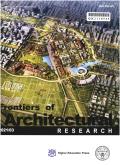Does architectural design require single-objective or multi-objective optimisation? A critical choice with a comparative study between model-based algorithms and genetic algorithms
IF 3.6
1区 艺术学
0 ARCHITECTURE
引用次数: 0
Abstract
Efficiency and accuracy have been challenging in the design optimisation process driven by building simulation. The literature review identified the limitations of previous studies, prompting this study to explore the performance of single-objective versus multi-objective efficiency and accuracy on equivalent problems based on control variables and to consider more algorithmic options for a broader range of designs. This study constructed a comparative energy-related experiment whose results are in the same unit, either as a single-objective optimisation or split into two objectives. The project aims to reduce annual energy consumption and increase solar utilisation potential. Our approach focuses on the use of a surrogate modelling algorithm, Radial Basis Function Optimisation Algorithm (RBFOpt), with its multi-objective version RBFMOpt, to optimise the energy performance while quickly identifying new energy requirements for an iterative office building design logic, contrast to traditional genetic-algorithm-driven. In addition, the research also conducted a comparative study between RBFOpt and Covariance Matrix Adaptation Evolutionary Strategies (CMAES) in a single-objective comparison and between RBFMOpt and Nondominated Sorting Genetic Algorithm II (NSGA-II) in a multi-objective optimisation process. The comparison of these sets of Opt algorithms with evolutionary algorithms helps to provide data-driven evidence to support early design decisions.
建筑设计需要单目标优化还是多目标优化?基于模型的算法和遗传算法比较研究的关键选择
在建筑模拟驱动的设计优化过程中,效率和准确性一直是个挑战。文献综述指出了以往研究的局限性,促使本研究在基于控制变量的等效问题上探索单目标与多目标的效率和准确性表现,并为更广泛的设计考虑更多算法选项。本研究构建了一个与能源相关的比较实验,其结果在同一单位中,既可以是单目标优化,也可以分成两个目标。该项目旨在减少年度能源消耗,提高太阳能利用潜力。与传统的遗传算法驱动相比,我们的方法侧重于使用一种替代建模算法--径向基函数优化算法(RBFOpt)及其多目标版本 RBFMOpt,在优化能源性能的同时,快速识别迭代办公建筑设计逻辑的新能源需求。此外,该研究还进行了 RBFOpt 和协方差矩阵适应进化策略(CMAES)在单目标比较中的比较研究,以及 RBFMOpt 和非支配排序遗传算法 II(NSGA-II)在多目标优化过程中的比较研究。这些 Opt 算法集与进化算法的比较有助于提供数据驱动的证据,以支持早期设计决策。
本文章由计算机程序翻译,如有差异,请以英文原文为准。
求助全文
约1分钟内获得全文
求助全文
来源期刊

Frontiers of Architectural Research
ARCHITECTURE-
CiteScore
6.20
自引率
2.90%
发文量
430
审稿时长
30 weeks
期刊介绍:
Frontiers of Architectural Research is an international journal that publishes original research papers, review articles, and case studies to promote rapid communication and exchange among scholars, architects, and engineers. This journal introduces and reviews significant and pioneering achievements in the field of architecture research. Subject areas include the primary branches of architecture, such as architectural design and theory, architectural science and technology, urban planning, landscaping architecture, existing building renovation, and architectural heritage conservation. The journal encourages studies based on a rigorous scientific approach and state-of-the-art technology. All published papers reflect original research works and basic theories, models, computing, and design in architecture. High-quality papers addressing the social aspects of architecture are also welcome. This journal is strictly peer-reviewed and accepts only original manuscripts submitted in English.
 求助内容:
求助内容: 应助结果提醒方式:
应助结果提醒方式:


